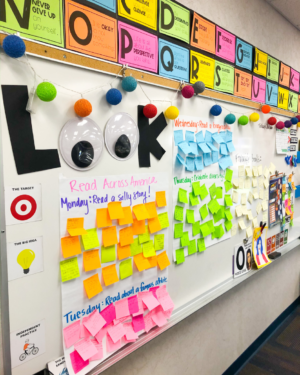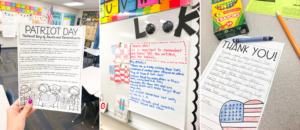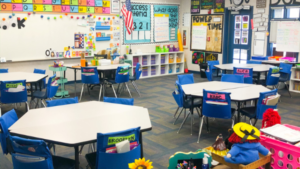“Success criteria” is not just another buzzword that is flying around education right now. Success criteria are essential in helping your students reach high levels of achievement, and you might be already doing it! So, let’s get into exactly what success criteria are and how you can start it in your classroom.
Success criteria provide students with an opportunity to assess their own learning. We can think about it as assessment as learning. This happens when students use feedback from personally monitoring what they’re learning to make adjustments, adaptations, and even major changes in what they understand. It’s concrete and specific.
Here are six examples of what it can look like:
1.”I can” Statements
“I can” statements are not just for learning goals. They are meant to identify to students what they are able to do in order to meet the learning goal. “I can” statements are aligned to the learning goal and are skills that students are able to accomplish in order to meet the new learning goal.
2. Rubrics
Rubrics support students in having a clear understanding of what they need to do in order to accomplish a writing task. They provide a clear pathway for students to self-assess and become agents of their own learning. If your district already follows a writing program with a specific rubric, then you can use that one since it will be the point of reference for evaluation purposes. Let’s say you do not have one that is universally used in your district, you can create your own.
3. Target Responses
Writing exemplars, target responses, or student samples. These are all examples of giving students a model of what to do so they can be successful. Giving students a target response that is aligned to the rubric will give students a visual of what is expected in their own writing. Students can use the target response as a guide or checkpoint while they’re writing their own pieces.
4. Big Idea
Students often ask why they need to learn something or why certain skills are being taught in school. When you use a “big idea” in your lesson, then it can answer that question for your students. Take some time during your lesson to explain the big idea and its connection to the lesson and the real world. It can be as simple as one sentence.
5. Steps in a Procedural Lesson
An effective approach when teaching students how to do something is to list out steps students can take to complete that task. This is different from a list of things to complete or get done. It’s a is a step-by-step plan on how students can complete the skill successfully.
6. Graphic Organizer in a Declarative Lesson
A declarative lesson is an explicit instruction lesson where the learning goal is something that students need to know or understand, it’s not something they have to “do” where they need steps like in a procedural lesson. Graphic organizers can serve as the success criteria in a declarative lesson, to show students how to organize the information they’re learning.
It provides students with clear and specific goals that can spark that motivation – even in reluctant learners. They feel like they have an ability to in fact meet the learning goal – which will make them want to try. If students already feel as if they’ll fail, they won’t’ try.
So why not give them the steps and supports to get there so they can continue to be motivated.




